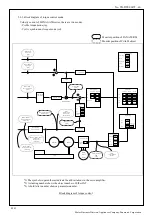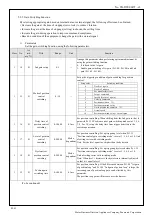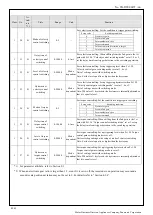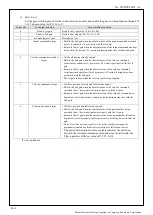
No. SX-DSV02472 -
77-
5-2-8 Feed forward function
When position control or full closed control is used, positional deviation can be further reduced when compared with
deviation where control is made only by feedback, and response is also improved, by calculating the velocity control
command necessary for operation based on the internal positional command, and by adding velocity feed forward to
the velocity command calculated by comparison with position feedback. In EtherCAT communication, speed
feedforward can be set up at 60B1h (Velociy offset) apart from this.
The response time of the velocity control system is also improved by calculating torque command necessary for
operation based on the velocity control command and by adding torque feed forward calculated by comparison with
velocity feedback to the torque command. In EtherCAT communication, torque feedforward can be set up by 60B2h
(Torque offset) apart from this.
The feed forward given through EtherCAT communication is added to the feed forward value (internally calculated
according to the parameter setting).
1)
Parameters
For MINAS-A5B series, the velocity feed forward and torque feed forward can be used.
Class No.
At-
trib-
ute
*1)
Title
Range
Unit
Function
1
10
B
Velocity feed
forward gain
0–1000
0.1%
Multiply the velocity control command calculated according to the
internal positional command by the ratio of this parameter and add the
result to the velocity command resulting from the positional control
process.
1
11
B
Velocity feed
forward filter
0–6400
0.01 ms
Set the time constant of 1st delay filter which affects the input of velocity
feed forward.
1
12
B
Torque feed forward
gain
0–1000
0.1%
Multiply the torque command calculated according to the velocity control
command by the ratio of this parameter and add the result to the torque
command resulting from the velocity control process.
1
13
B
Torque feed forward
filter
0–6400
0.01 ms
Set up the time constant of 1st delay filter which affects the input of torque
feed forward.
*1) For parameter attribute, refer to Section 9-1.
2)
Usage example of velocity feed forward
The velocity feed forward will become effective as the velocity feed forward gain is gradually increased with the
velocity feed forward filter set at approx. 50 (0.5 ms). The positional deviation during operation at a constant
velocity is reduced as shown in the equation below in proportion to the value of velocity feed forward gain.
Positional deviation [unit of command] = command velocity [unit of command/s] /
positional loop gain [1/s]
×
(100–velocity feed forward gain [%]) / 100
Command velocity
Motor velocity
Positional deviation
Positional deviation within the constant speed range will reduce as the velocity forward gain is increased.
Velocity feed forward gain
50 [%]
80 [%]
0 [%]
Time
R1.05
Motor Business Division, Appliances Company, Panasonic Corporation
















































